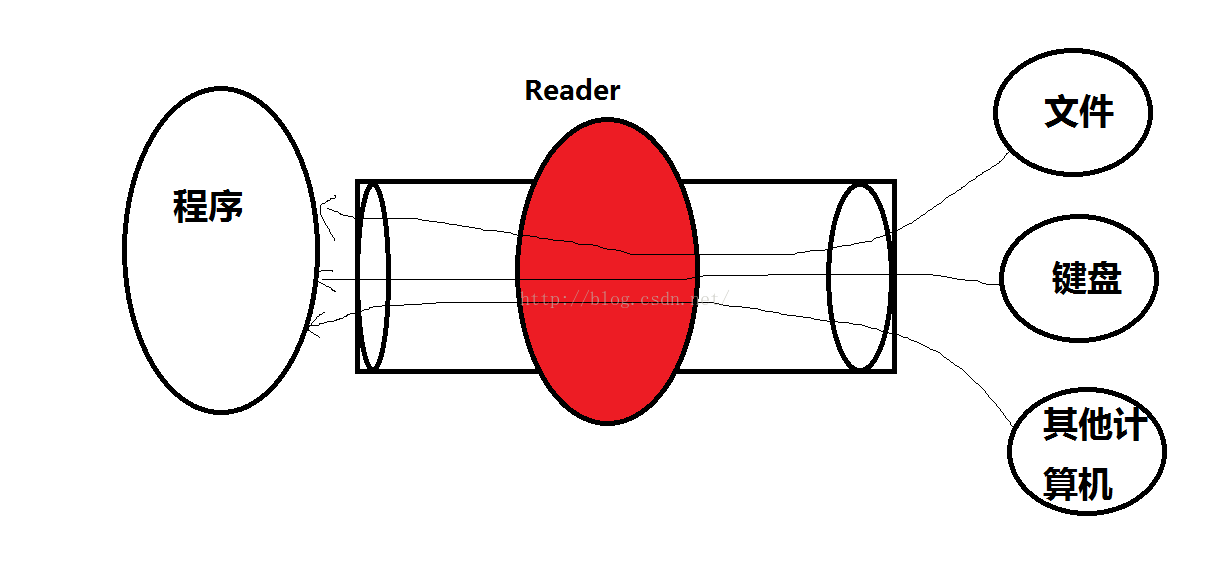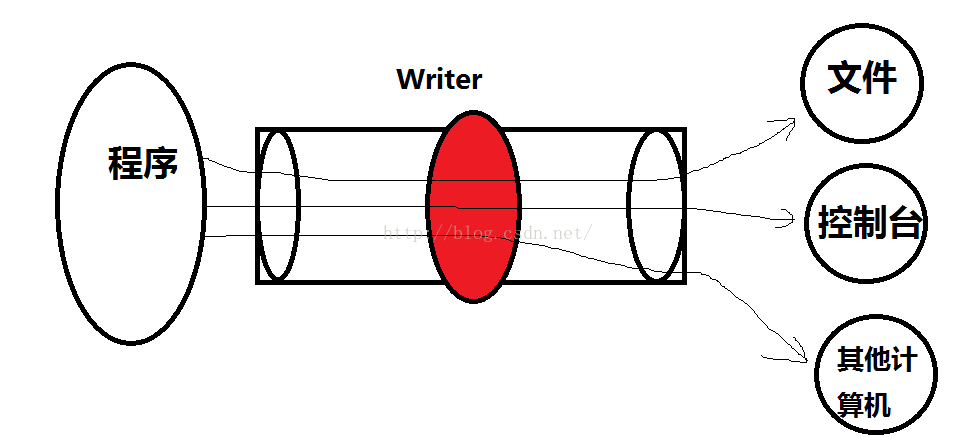一:面向符的输入流
父类Reader为抽象类,不能被实例化。面向字符的输入流都是Reader类的子类,其类层次结构下图所示:
下表 列出了 Reader 的主要子类及说明

下表 列出了 Reader 的常用方法:

二:面向字符的输出流
父类Writer为抽象类,不能被实例化。面向字符的输入流都是Writer类的子类,其类层次结构下图所示:
下表 列出了 Writer 的主要子类及说明
下表 列出了 Writer的常用方法:
三:面向字符的输入输出流简单应用
1:通过字符向file中写数据
public void WriterFileByChar(File file) {
FileWriter fw = null;
char[] chars = new char[128];
int len = chars.length;
for (int i = 0; i < len; i++) {
chars[i] = (char) i;
}
try {
fw = new FileWriter(file);
fw.write(chars);
} catch (IOException e) {
e.printStackTrace();
} finally {
try {
if (fw != null)
fw.close();
} catch (IOException e) {
e.printStackTrace();
}
}
} public void ReaderFileByChar(File file) {
FileReader fr = null;
try {
fr = new FileReader(file);
int c;
while ((c = fr.read()) != -1) {
System.out.print(c);
}
} catch (FileNotFoundException e) {
e.printStackTrace();
} catch (IOException e) {
e.printStackTrace();
} finally {
try {
if (fr != null)
fr.close();
} catch (IOException e) {
e.printStackTrace();
}
}
} /**
* 文件复制操作
*
*/
public void Coppy(File file1,File file2) {
FileReader fil = null;
FileWriter fos = null;
try {//捕获异常
fil = new FileReader(file1);//实例化输入流
fos = new FileWriter (file2);//实例化输出流
int temp;
//从file1中通过输入流调用fil.read()读取数据,返回值为-1时表示数据读完了
while ((temp = fil.read()) != -1) {
fos.write((char) temp);//将数据写入file2
}
} catch (IOException e) {
e.printStackTrace();
} finally {
try {
if (fil != null) {
fil.close();//关闭输入流
}
if (fos != null) {
fos.close();//关闭输出流
}
} catch (IOException e) {
e.printStackTrace();
}
}
}






























 1万+
1万+

 被折叠的 条评论
为什么被折叠?
被折叠的 条评论
为什么被折叠?








